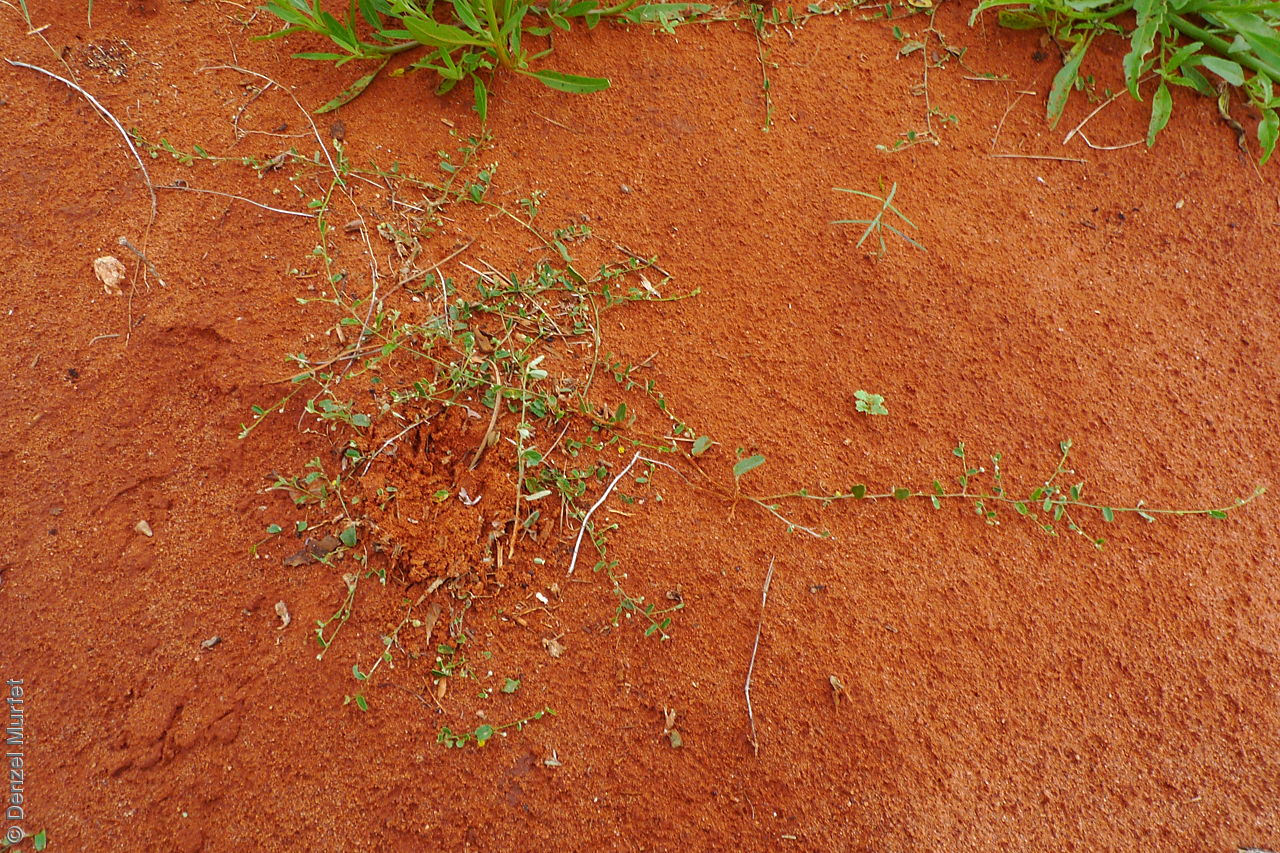
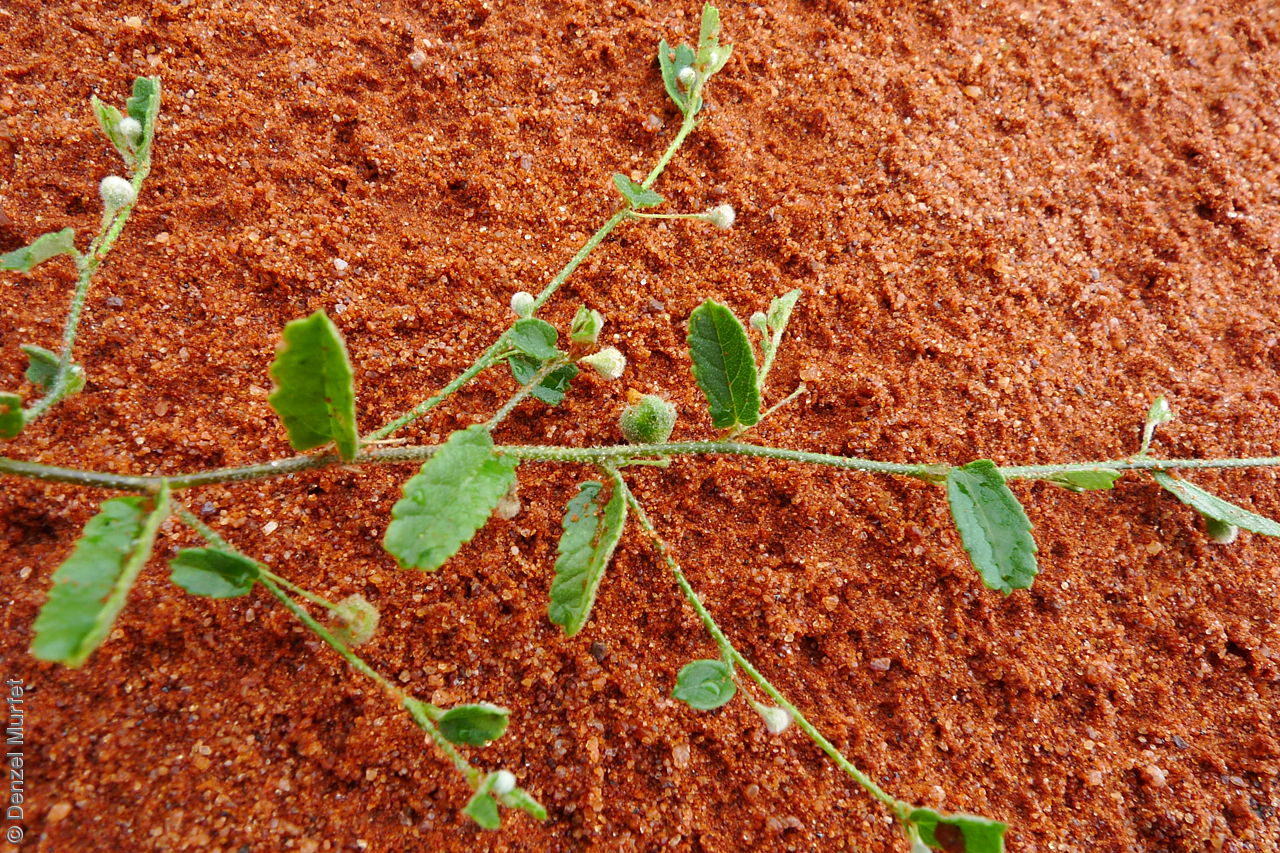
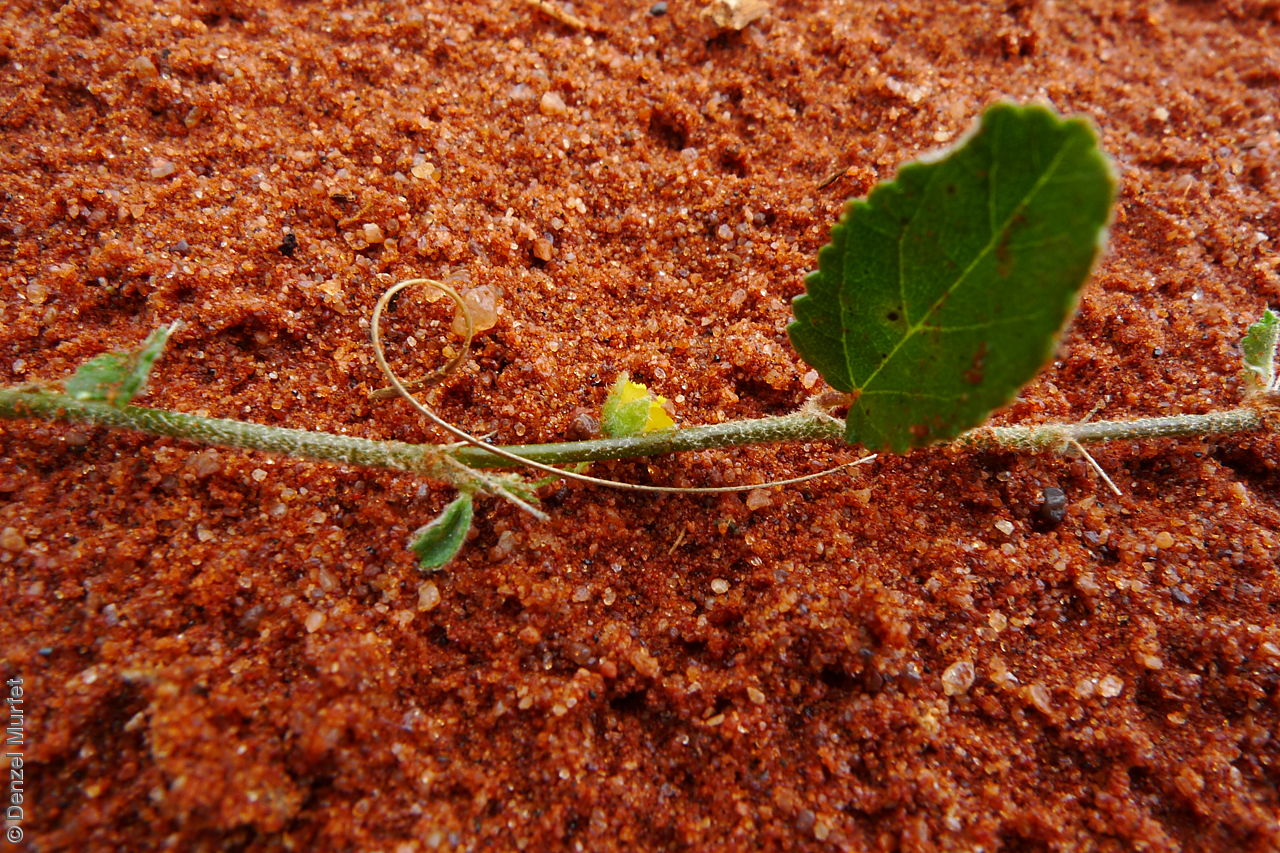
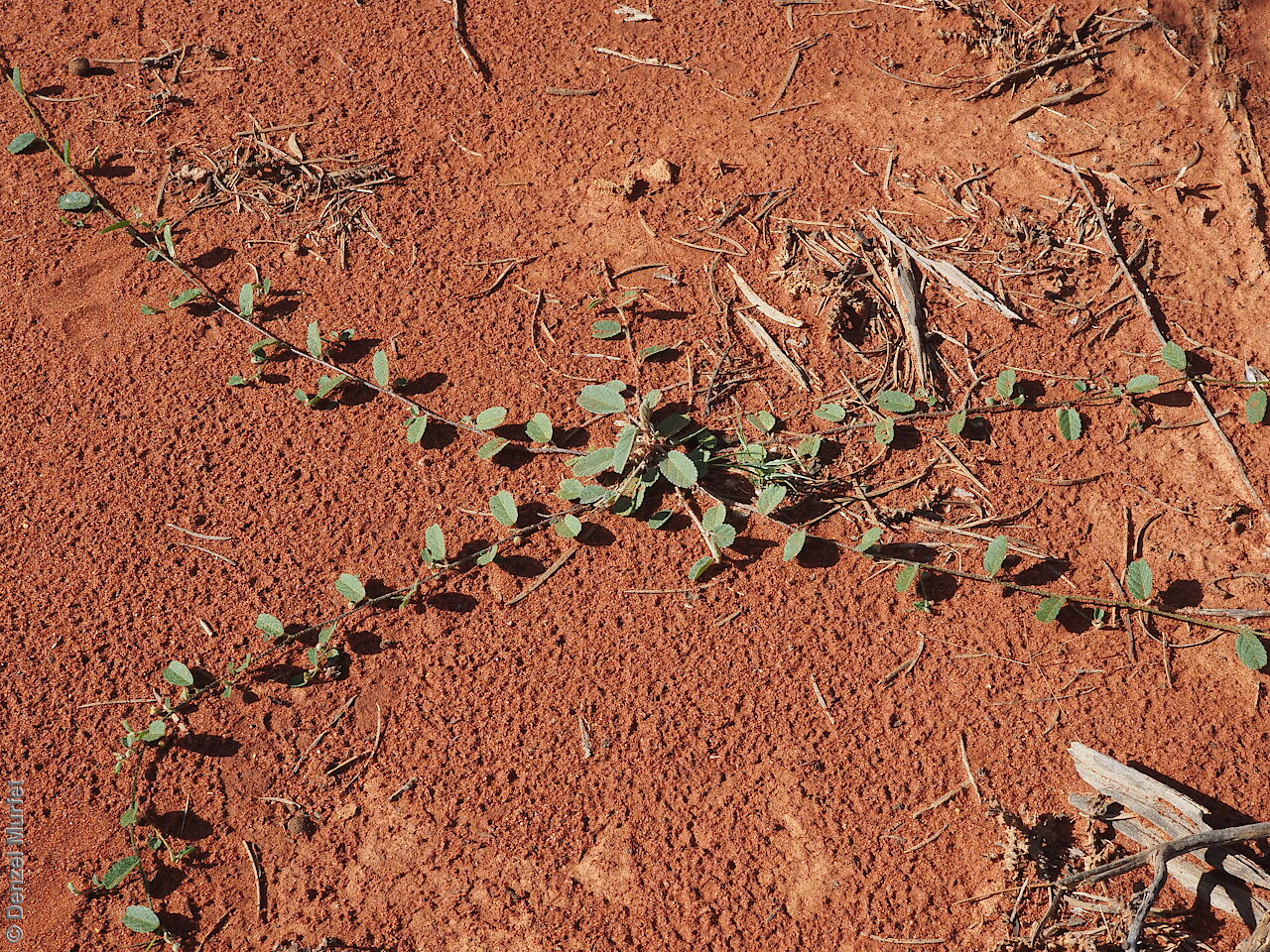
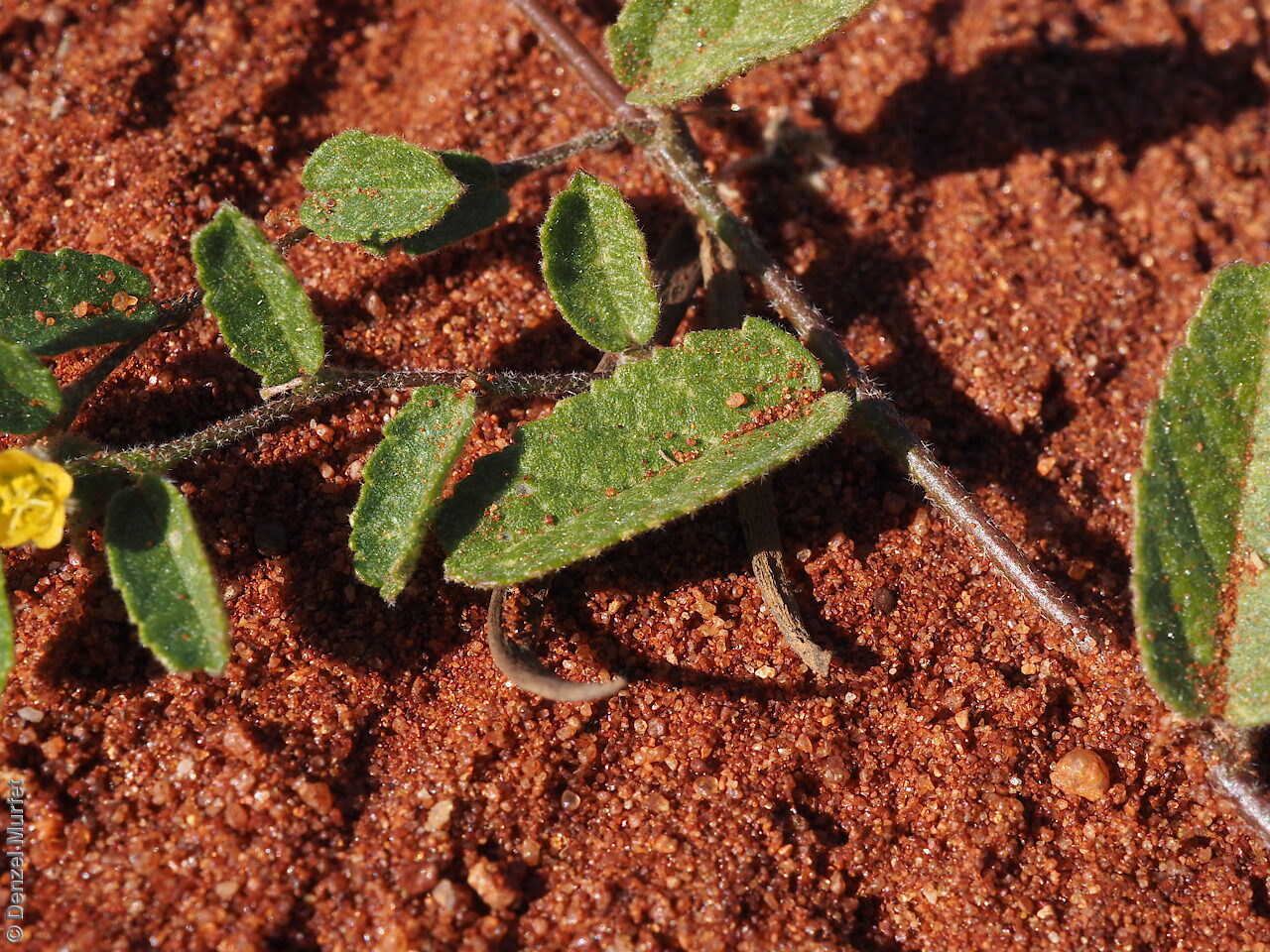
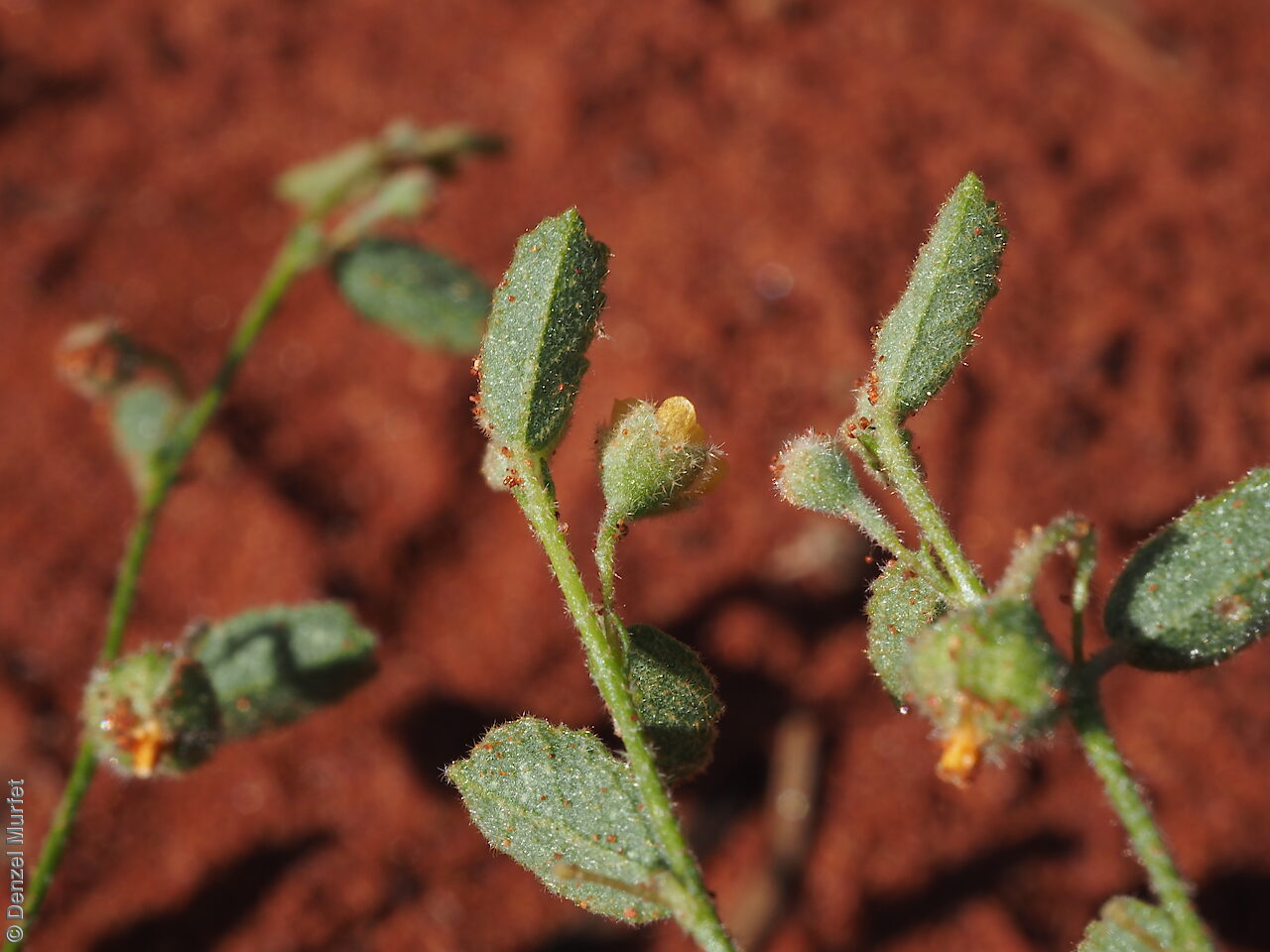
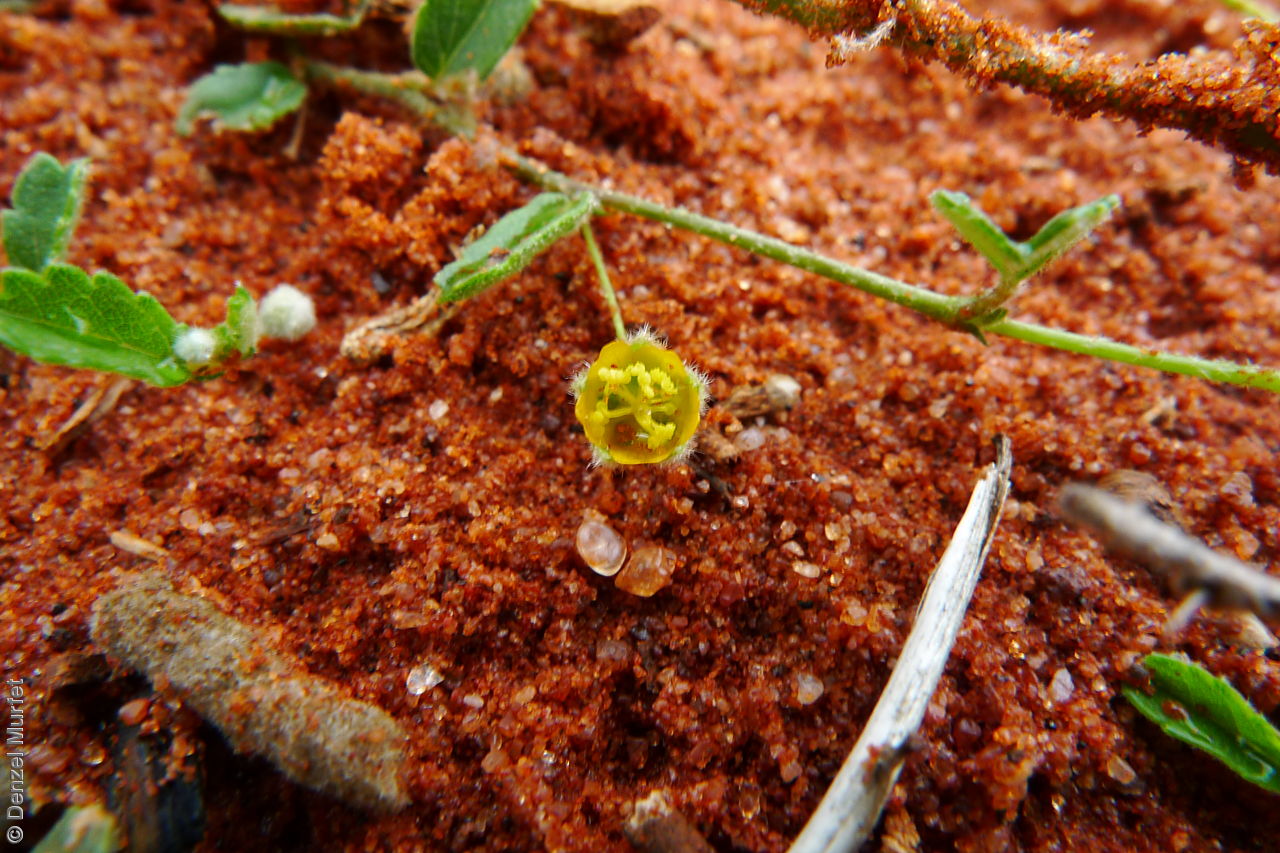
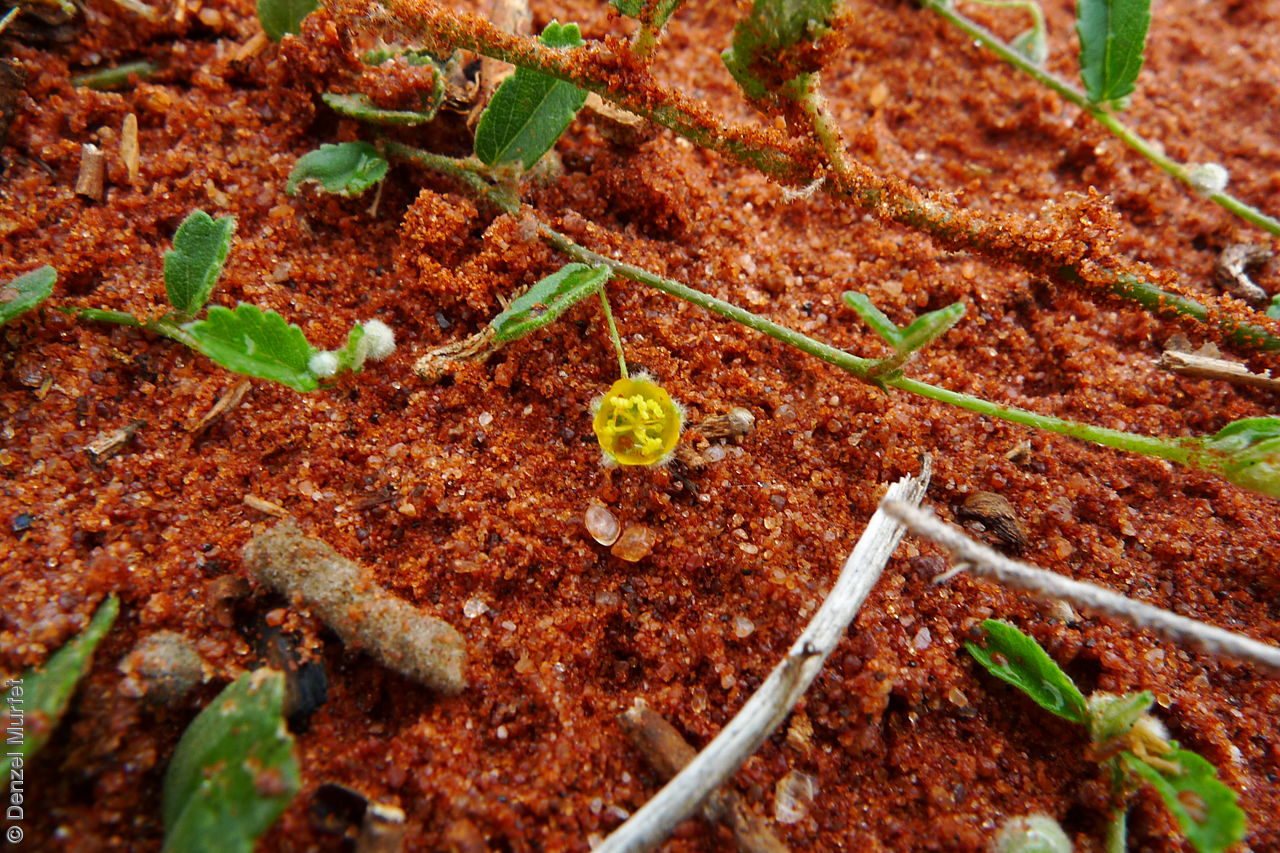
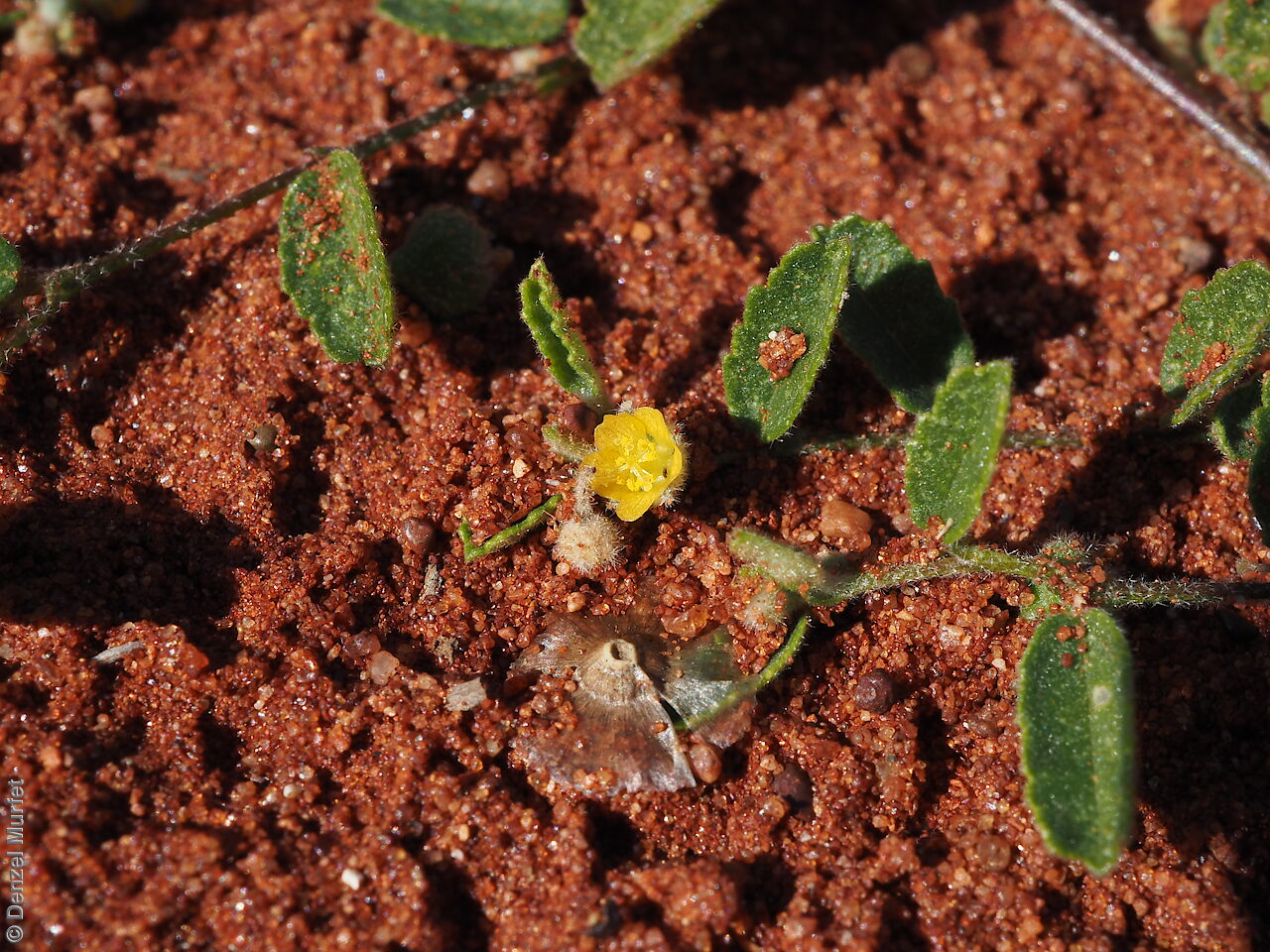
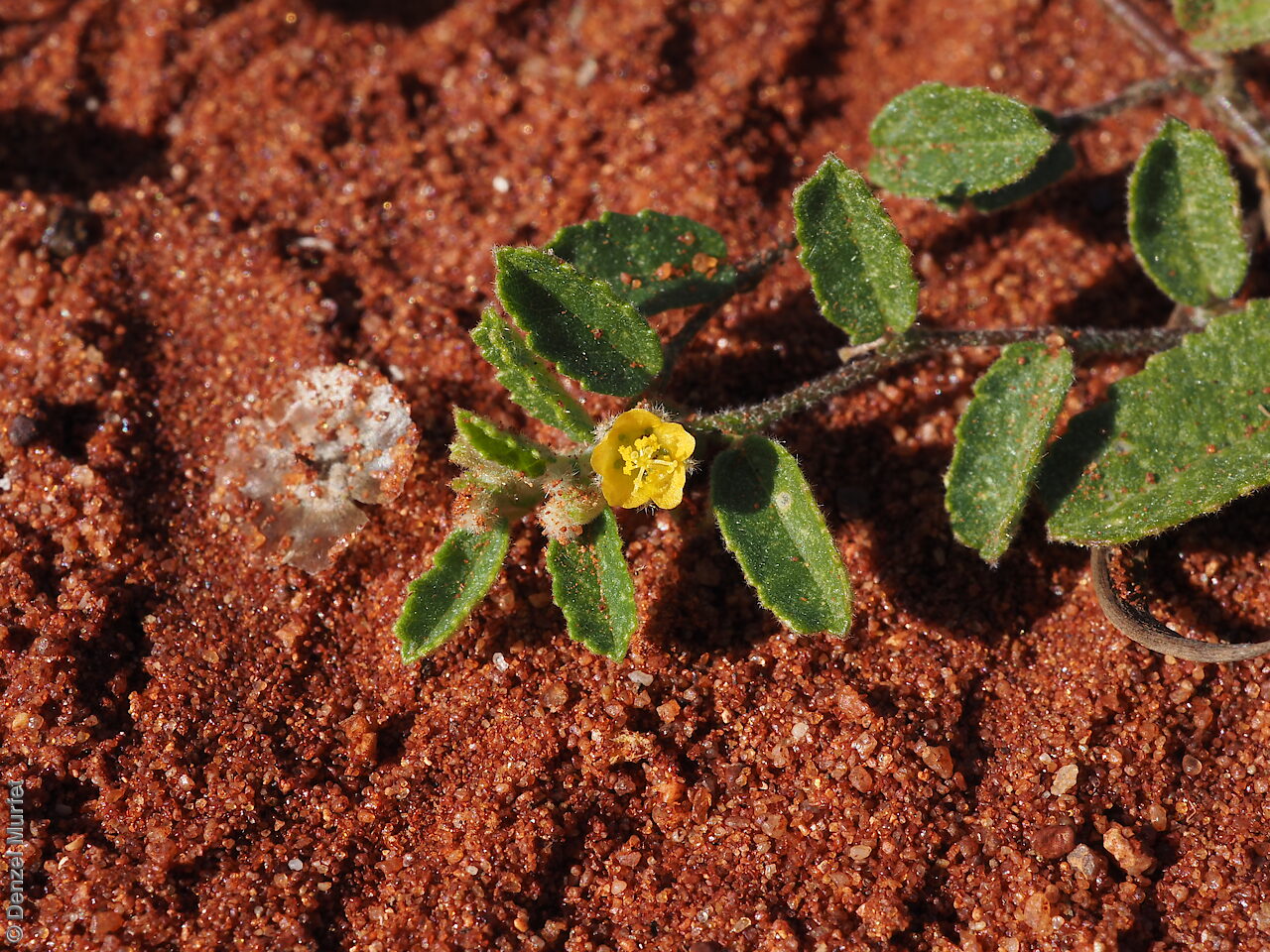
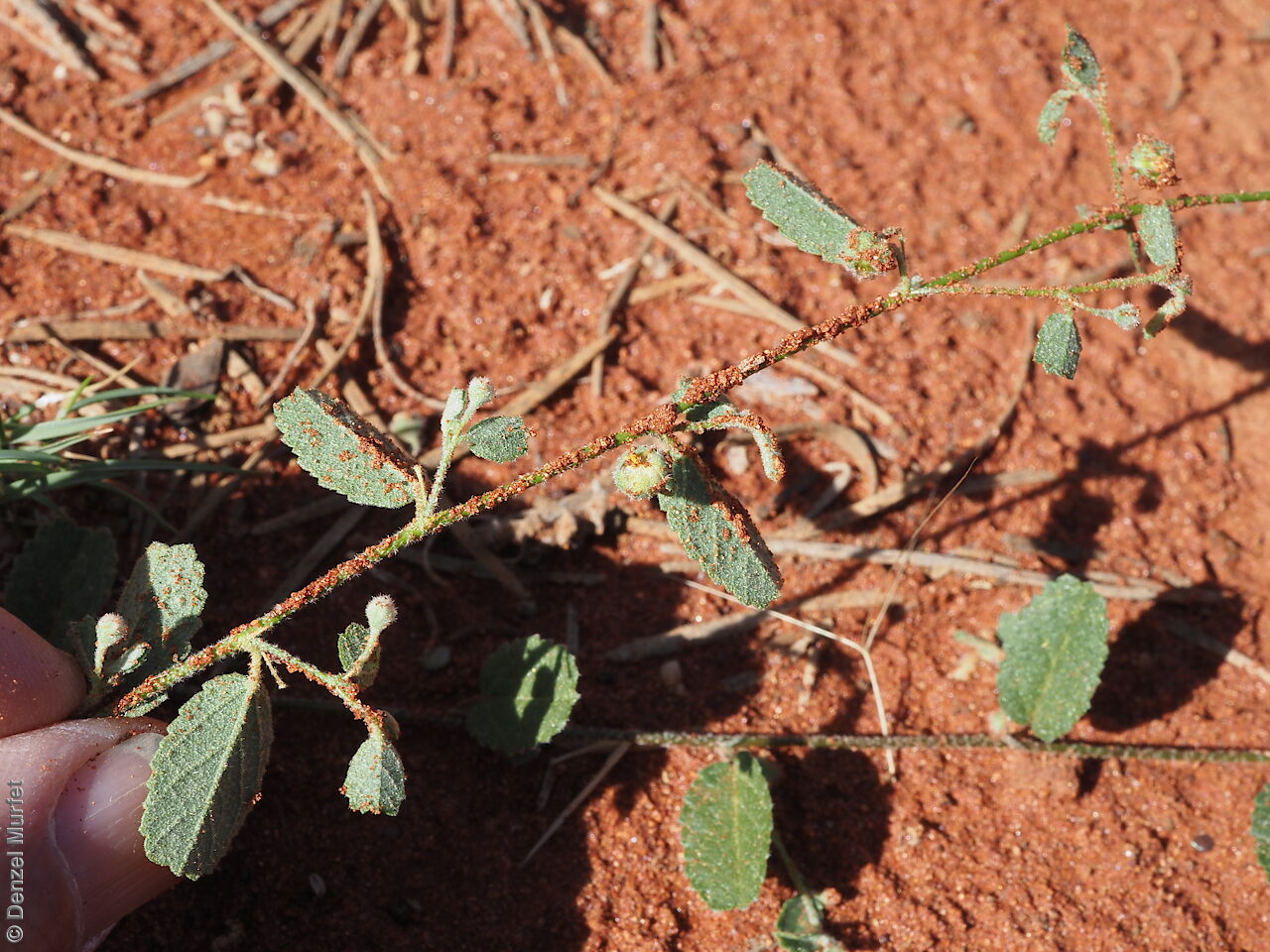

_hreg_896.png)
Etymology
Sida a Greek name used by Theophrastus for a water-lily, probably in reference to Nymphaea alba or for a pomegranate tree. Linnaeus transferred the name to Malvaceae changing its primary, pre-Linnaean application. The species is un-named, M is the phrase name.
Distribution and status
Found in the north-western part of South Australia, growing on sandy soils. Native.
Herbarium regions: North Western, Flinders Ranges
NRM regions: Alinytjara Wilurara, South Australian Arid Lands
AVH map: SA distribution map (external link)
Plant description
Prostrate shrub with hairy wiry stems. Leaves oblong to ovoid, green above, pale green below, margin toothed. Inflorescence solitary in leaf axils with small yellow flowers on a long slender stalk. Seed embryo type is folded.
Seed collection and propagation
Collect mature fruits, those that are turning pale straw colour and contain dark hard seeds. Place the capsules in a tray and leave to dry for two weeks. Then rub the capsules gently with a rubber bung or by hand to dislodge the seeds. Use a sieve to separate the unwanted material. Store the seeds with a desiccant such as dried silica beads or dry rice, in an air tight container in a cool and dry place. This species has physical dormancy that needs to be overcome for the seed to germinate (e.g. nicking or softening the seed coat).